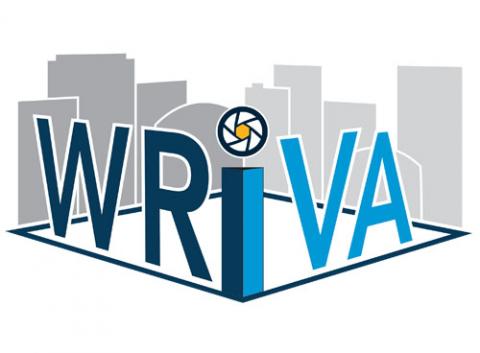Datasets
Open Access
WRIVA Public Data
- Citation Author(s):
- Submitted by:
- Myron Brown
- Last updated:
- Tue, 03/04/2025 - 14:16
- DOI:
- 10.21227/cjk5-gf33
- Data Format:
- License:
 642 Views
642 Views- Categories:
- Keywords:
Abstract
The IARPA WRIVA program aims to develop software systems that can create photorealistic, navigable 3D site models using a highly limited corpus of imagery, to include ground level imagery, surveillance height imagery, airborne altitude imagery, and satellite imagery. Additionally, where imagery lacks metadata indicating geolocation, information about camera parameters, or is corrupted by artifacts, WRIVA seeks to detect and correct these factors to incorporate the imagery in site-modelling and other downstream image processing and analysis algorithms. The Johns Hopkins University Applied Physics Laboratory (JHU/APL) and the MIT Lincoln Laboratory have collected, calibrated, and curated data to support the WRIVA program. JHU/APL and the MITRE Corporation have collaborated to develop challenge datasets designed to evaluate WRIVA systems against a broad range of program objectives. IARPA is making some of this data publicly available to enable reproducible public research.
WRIVA Challenge Datasets (11/2024)
Datasets were constructed to explore sensitivity of camera calibration and novel view synthesis algorithm performance to various real-world challenges. Datasets are provided for the following challenge themes:
- Image density
- Camera models
- Varying altitudes
- Reconstructed area
- Image resolution
- PTZ detection
A zip file is provided for each theme. Each dataset folder is labeled t<xx>_v<xx>_s<xx>_r<xx>_<theme>_<details>.
- t<xx>: theme number
- v<xx>: challenge vector number for the given theme
- s<xx>: step number in the challenge vector, with each step varying the challenge level
- r<xx>: revision number for the dataset; note that only one revision is provided
- <theme>: theme name
- <details>: label indicating test site and any other identifying information
Each dataset includes input and reference folders, each with images and JSON metadata. Additional details regarding metadata schema, specific challenge dataset settings, and performance evaluation will be provided.
WRIVA Satellite Images (1/2025)
MAXAR WorldView images for five geographic locations have been publicly released and may be downloaded here, (C) 2025 MAXAR. Please review the EULA included with the data. Some of these cover areas for which WRIVA challenge datasets have not yet been released. For those covering areas matching the currently released datasets, the site identifiers are reported below.
- JHU-APL: 11 panchromatic and 10 multispectral images, covering A01 datasets
- JHU-Homewood: 10 panchromatic and 7 multispectral images
- MIT-Campus: 9 panchromatic and 6 multispectral images
- MATF1: 10 panchromatic and 6 multispectral images, covering M07 datasets
- MUTC: 10 panchromatic images and 7 multispectral images, covering A05, A06, and A08 datasets
ULTRRA Versions of WRIVA Datasets (1/2025)
WRIVA datasets may also be converted to the simpler format used for the ULTRRA Challenge (https://ieee-dataport.org/competitions/ultrra-challenge-2025). This allows researchers to use any ULTRRA solution to work with our data directly. The conversion code convert_wrivacraft_to_ultrra.py is provided in the ULTRRA baseline GitHub repository (https://github.com/pubgeo/ultrra-baseline).
WRIVA Full Site Data (In work)
In addition to providing pre-curated challenge datasets, we will release full datasets for some test sites and code for crafting new challenge datasets.
Acknowledgements
This work was supported by Intelligence Advanced Research Projects Activity (IARPA) contract numbers 2020-20081800401 and 2020-20090800401-017. Disclaimer: The views and conclusions contained herein are those of the authors and should not be interpreted as necessarily representing the official policies or endorsements, either expressed or implied, of IARPA or the U.S. Government.
Members of the JHU/APL data team include Ahmed Al Bayati, Neal Baker, Katie Blumer, Hirsh Goldberg, Rich Hooks, Taylor Kramer, Nathan Larson, Homer Li, Sean Monaghan, Nico Norena Acosta, Devin Ramsden, William Shaw, Lee Stearns, Diane Tang, Arpad Voros, Nile Walker, Gary Winkler, Puck Yan, and Myron Brown.
Members of the MIT/LL data team include Yeray Pabon Gonzalez, Dieter Schuldt, David Strohschein, Daniel Dumanis, Jessica Kesner, Jameson Hannon, James Skinner, Jacob Hardin, Will Bartlett, Travis Riley, Russell Kelley, and Michael Chan.
This work would not have been possible without the generous commitment of time provided by representatives from each of the test sites to facilitate and coordinate our data collection efforts.
More from this Author
Dataset Files
wriva-challenge-datasets-varying-altitudes-1.zip (27.62 GB)
wriva-challenge-datasets-image-density-1.zip (12.94 GB)
wriva-challenge-datasets-ptz-detection-1.zip (11.89 GB)
wriva-challenge-datasets-artifact-injection-1.zip (11.60 GB)
wriva-challenge-datasets-image-resolution-1.zip (7.05 GB)
wriva-challenge-datasets-reconstructed-area-1.zip (5.47 GB)
wriva-challenge-datasets-camera-models-1.zip (5.08 GB)
wriva-satellite-images-JHU-APL-(C)2025MAXAR.zip (16.72 GB)
wriva-satellite-images-JHU-Homewood-(C)2025MAXAR.zip (16.18 GB)
wriva-satellite-images-MATF1-(C)2025MAXAR.zip (12.26 GB)
wriva-satellite-images-MUTC-(C)2025MAXAR.zip (11.69 GB)
wriva-satellite-images-MIT-Campus-(C)2025MAXAR.zip (13.25 GB)
ultrra25-dataset-archive.zip (6.60 GB)
Open Access dataset files are accessible to all logged in users. Don't have a login? Create a free IEEE account. IEEE Membership is not required.







